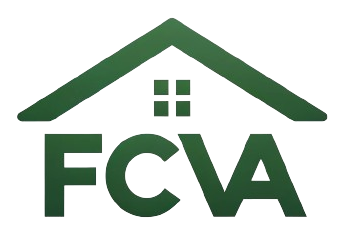Best 9 Disclosures That Protect Sellers From Future Liability
Have you ever wondered how to protect yourself when selling your home? This is a crucial question for any homeowner considering a sale, especially if you want to avoid future liability. Sellers often face risks when disclosing property conditions, and ensuring you cover all bases can save you a lot of trouble later. Let’s break down the best disclosures that will not only help you sell your home effectively but also safeguard you against potential legal issues down the line.
Understanding the Importance of Disclosures
When selling a property, disclosures serve as an essential communication tool. They provide crucial information about the house, its condition, and any underlying issues that potential buyers should be aware of. Being transparent not only builds trust but can also protect you legally. Under many state laws, failing to disclose known defects or issues with your property can lead to serious consequences, including lawsuits.
1. Property Condition Disclosure
A property condition disclosure statement is your first line of defense. This document outlines the current condition of the home and lists any known defects or issues, ranging from plumbing problems to foundation cracks. Be as descriptive and honest as possible. If you’re aware of an issue and choose to hide it, you might find the tables turned in a legal situation.
Key Points to Include:
- Roof age and condition
- Age of major systems (HVAC, plumbing, and electrical)
- History of flooding or water damage
- Pest infestations or treatments
2. Lead-Based Paint Disclosure
For homes built before 1978, a lead-based paint disclosure is mandatory. This federal law requires you to inform potential buyers about any known lead paint hazards. You also need to provide buyers with a pamphlet outlining the risks associated with lead-based paint.
Why You Should Care:
Failing to disclose lead paint hazards can lead to serious legal repercussions, including fines and lawsuits from buyers. After all, lead exposure can cause significant health issues, especially for young children.
3. Mold Disclosure
Mold can be a significant issue for homeowners, and many buyers are increasingly aware of its potential risks. If you’ve experienced mold problems in your home, even if you’ve resolved them, it’s advisable to disclose this information.
Consider Including:
- Areas affected by mold
- Remediation efforts taken
- Ongoing maintenance to prevent mold growth
4. History of Repairs and Renovations
Documenting your home’s repair and renovation history can add value and also protect you from liability. Make a detailed account of any significant repairs or upgrades made to the property. Buying a home is often a leap of faith for buyers, and knowing the history can ease concerns.
What to List:
- Dates of major renovations
- Materials used and contractors hired
- Home inspections performed before and after renovations
5. Neighborhood Issues
Sometimes the problems affecting a property aren’t just about the home itself but about the surrounding area. If there are community issues like crime rates, ongoing construction, or pending neighborhood developments, it’s wise to share this information.
This Could Include:
- Changes in zoning laws
- Planned developments that might affect property values
- Local nuisances (like noisy neighbors or frequent traffic problems)
6. Natural Hazards Disclosure
Every area has its own unique exposure risks, be it floods, earthquakes, or hurricanes. Depending on your locality, you may be required to provide a natural hazard disclosure statement. Even if it’s not required, it is wise to disclose any risks associated with natural disasters.
Key Elements to Cover:
- Flood zones and history of flooding
- Earthquake risk and any related retrofitting done
- Other regional environmental concerns
7. Homeowners Association (HOA) Disclosure
If your property is part of a homeowners association, transparency about the rules, fees, and regulations is essential. Buyers should know what they are committing to when they purchase a property governed by an HOA.
Make Sure to Provide:
- HOA rules and regulations
- Monthly or annual fees
- Any pending assessments or dues
8. Environmental Hazards
This goes beyond mold and lead; buyers may want to know if the property is near hazardous waste sites or is affected by factors like contaminated water supply. A thorough environmental disclosure can greatly lessen your liability.
Consider Including:
- Proximity to contaminated sites
- Details about past or current environmental assessments
- Known land use restrictions due to environmental concerns
9. Radon Disclosure
Radon is a colorless and odorless gas that can pose health risks. If your home has high radon levels, you must disclose this information. Buyers often conduct radon testing, and if you’ve already tested, providing those results upfront can be beneficial.
Here’s What to Include:
- Recent radon test results
- Details on mitigation systems, if installed
- Any actions taken to address radon issues in the past
Final Thoughts on Disclosures
Taking the time to understand and implement these critical disclosures can significantly protect you from future liability. Being open and honest with potential buyers enhances your reputation and instills confidence, which is crucial in today’s competitive market.
Taking Action
If you’re ready to sell your home, consider creating a comprehensive disclosure document that includes all the necessary information as discussed. It may require some time and effort, but protecting yourself and ensuring a smoother transaction is well worth it.
Also, consider consulting with a real estate professional to guide you through this process. They can help you tailor your disclosures and navigate specific state requirements. At FastCashVA.com, our goal is to assist you through your home selling journey. Whether you need help understanding what to disclose or want fast cash offers for your property, our team is here to support you with straightforward, trustworthy information and options.
A Quick Recap of Key Considerations
Here’s a summarized table to help you remember the key disclosures you should focus on in your home selling process:
| Disclosure Type | Key Information to Include |
|---|---|
| Property Condition | Repair history, issues, major systems age |
| Lead-Based Paint | Known hazards, pamphlet provided to buyers |
| Mold | Past mold problems, remediation undertaken |
| Repair & Renovation History | Dates, materials, contractors involved |
| Neighborhood Issues | Crime rates, construction, community problems |
| Natural Hazards | Flood zones, earthquake risks |
| HOA Information | Rules, fees, assessments |
| Environmental Hazards | Proximity to hazardous sites |
| Radon | Recent test results, mitigation details |
Completing these disclosures thoroughly can help you navigate your real estate transaction with confidence. After all, transparency is the best policy when it comes to selling your home. You want buyers to feel secure in their purchase, and by sharing relevant information, you can reduce the risk of misunderstandings or legal disputes later on.
So, how can you use this information as you prepare to sell your home? Reflect on your own property and think about any issues or history that potential buyers should know. Equip yourself with the right documents, and you’ll be stepping into your selling journey with the best footing possible. Happy selling!
Ready to sell your house fast in Virginia? FastCashVA makes it simple, fast, and hassle-free.
Get your cash offer now or contact us today to learn how we can help you sell your house as-is for cash!
Disclosure: As an Amazon Associate, I earn from qualifying purchases.



